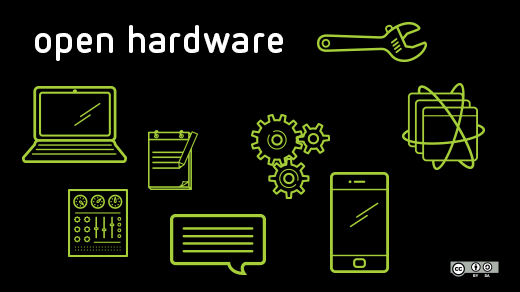It has never been a better time to understand the components that fit together to make the hardware we use work. To do that, lets look at my five favorite open hardware projects.
First, what do I mean by open hardware? I mean that the components that make up a device are available for the user to see. No secret formulas. The ingredients are completely transparent, and if you chose, you can source the raw parts and assemble them yourself. You can also learn from the process of assembly and with a team spirit share any problems encountered, then improving the formula of the device. For example, you could suggest better parts or improve the code to make it run faster.
Of my top five here, many were proposed on crowdfunding sites for startup funding. This gives the wider public a chance to contribute to the initial startup costs of the projects. Benefits can be offered in return for a contribution. For instance, a minimum donation may credit the contributor with a founder mention on the homepage of the website, and a higher contribution may reward the funder with first access to the initial run of the product. Ultimately, a target for the startup fund is set and if the target is hit, rewards are sent, to the "backers". And, if the campaign fails to hit that target, no money is withdrawn.
Pi-Top
The Pi-Top is a laptop with a Raspberry Pi as the motherboard and a build with open architecture, so if you have to buy components separately you are able to do so. Improvements to the plans only benefit the community. With the 3D plans also available, what better way to make your Pi portable than an established campaign? If successfully funding, you be able to 3D print the case yourself or order the kit pre-printed for home assembly.
RaspiTab
If you're all fingers and thumbs, the RaspiTab is the project for you. It's commited to open principles, with a Kickstarter campaign to demonstrate and re-inforce their enthusiasm for open. It is rather exciting to imagine building an app directly on a motherboard that you can remove with the application of a standard screwdriver. If you’ve ever had to upgrade your phone because of a cracked screen, you'll see the appeal.
I was really excited about this project and was surprised when it didn't hit it's funding target. The team promises to come back with a stronger campaign and recently published an image of the board, a PCB designed to the specifications of the Raspberry Pi Compute Module. This offered vendors the opportunity to develop boards to the specification of the raspberry pi and ready to run images printed to run on the standard board.
The Espruino
As a component for a device you can build out and code for, the Espruino is exquisite. It talks the language of the web, which means that with the current emphasis on code in education, and an emphasis on web standards, those with an understanding of Javascript will be able to contribute to developing the project. It is tiny but don’t let that distract you, as it packs some incredible punch. It already has Node.js libraries so it is web server ready, it has an open WRT library so that permits router functionality with the size of a penny. It also has connectivity to the Arduino cc3300 WiFi module, so for the price of a video game you can talk to your project across the network and the device itself draws less power than the Raspberry Pi B+. (The web-based code editor shares the best parts of it’s style with Scratch, so it is user friendly.)
Sam
The ultimate electronic wireless kit. This is a range of very small components that are beautiful. They were on display at MozFest and are tiny, around the size of an adult thumb. They follow the IF sensor receives input, then a button or a switch performs whatever task you have assigned the output. For example, turn the fan on or spin the motor, and this is allocated via the Lego like computer interface. This team has a commitment and understanding of the need for open hardware and the array of devices available to incorporate into your project or even use as a stand-alone desk toy. In the video on their site, see the fan used as a bubble blower and a hand-waving doorbell, which might offer a visual signal for someone who cannot hear the doorbell.
Pinoccio
Last but not least is the Pinoccio. This project is fully established, and like the Espruino, is fully connectable to the Arduino set of expansion boards.
These boards come in pairs. A lead scout and a field scout. The lead scout can communicate with your wireless network and the Pinoccio network which will be a network of field scouts communicating on a mesh network. A mesh network is a wireless network which runs on an independant frequency to your wireless Internet network. How about this idea? A set of field scouts set up at a standard distance with cameras set to trip a second apart the first with an infrared beam as the trip switch to record the classic horse running sequence. This was the classic experiment Eadweard Muybridge conducted to prove that a horse ran by lifting it's legs independantly, leading to the birth of the moving image and consequently film.
Hardware
Connection
This article is part of the Open Hardware Connection column coordinated by Jason Hibbets. Share your stories about the growing open hardware community and the fantastic projects coming from makers and tinkers around the world by contacting us at open@opensource.com.







4 Comments